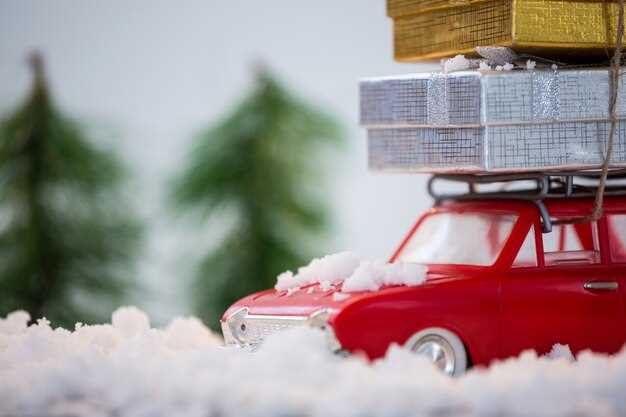
Owning a vintage automobile is not just about the thrill of driving; it’s also about preserving a piece of history. Proper care is essential to maintain the beauty and functionality of these classic vehicles. Each season brings different challenges and opportunities for antique car owners to ensure that their autos remain in pristine condition.
As the temperature fluctuates throughout the year, understanding how climate affects vintage cars is crucial. In spring, for instance, it’s important to conduct thorough inspections after winter storage. This is the time to assess any potential damage caused by freezing temperatures and to prepare your auto for the road ahead. Regular maintenance routines should include oil changes, tire checks, and brake inspections, as these elements can degrade over time if neglected.
Summer heat can be particularly harsh on classic cars, with risks such as engine overheating and paint fading. Implementing protective measures, including shade while parked and regular cleaning, can significantly enhance the longevity of your vehicle’s exterior and interior. In the fall, as leaves begin to fall, ensuring that the undercarriage and vents are free of debris will help prevent rust and other forms of deterioration.
Finally, winter brings unique challenges that require proactive approaches to preservation. Storing your vintage auto properly during the cold months can make all the difference. Specialists recommend using a dehumidifier in storage areas and considering classic car covers to shield against moisture. By following these seasonal care tips, you can enjoy your antique vehicle for many years to come.
Winter Preparation: Protecting Your Vintage Auto from Cold Weather

As the cold weather approaches, it’s crucial to take specific measures to ensure your vintage auto remains in pristine condition. One of the first steps in winter preparation is to thoroughly clean your vehicle. Remove any dirt, debris, and salt from the exterior and undercarriage to prevent rust and corrosion. A detailed wash followed by a coat of wax will provide an added layer of protection against harsh elements.
Next, ensure that your vintage auto’s fluids are at optimal levels. Check the antifreeze mixture to prevent the engine from freezing, and consider changing the oil, as colder temperatures can affect its viscosity. Additionally, topping off the fuel tank before storing will reduce the risk of condensation forming inside the tank.
Proper storage is essential for winter preservation. If possible, use a climate-controlled garage to shield your vintage vehicle from extreme temperatures. If a garage isn’t available, cover the auto with a breathable car cover that can keep moisture at bay while allowing any trapped humidity to escape.
Tire care is also important during the winter months. Consider raising your vintage auto on jack stands to relieve pressure from the tires and prevent flat spots. Alternatively, ensure that the tires are properly inflated to the recommended pressure and check for signs of wear.
Finally, disconnecting the battery can help avoid issues related to parasitic drain from the electrical system. Store the battery in a warm, dry place, and consider using a trickle charger to maintain its charge during the winter months.
By following these seasonal tips, you can protect your vintage auto from cold weather and ensure it remains a cherished part of your collection for years to come.
Spring Awakening: First Steps for Reviving Your Classic Car

As the winter frost melts away, it’s time to breathe new life into your vintage auto. Spring brings a sense of renewal, and your classic car deserves a thorough check-up to ensure it is ready for the road. Follow these essential steps to get your vehicle back in prime condition.
1. Perform a Comprehensive Inspection: Begin by examining your classic car thoroughly. Look for any signs of rust, wear, or damage that may have occurred during the winter months. Pay special attention to the body, undercarriage, and wheel wells, as salt and moisture can accelerate deterioration.
2. Check Fluid Levels: Before starting your vehicle, check all essential fluids, including oil, coolant, brake fluid, and transmission fluid. Old or contaminated fluids can lead to serious engine problems, so consider replacing them if they are not fresh. This is especially crucial after a season of inactivity.
3. Inspect the Battery: Cold temperatures can take a toll on your auto battery. Ensure that the terminals are clean and free from corrosion. If the battery is weak or shows signs of age, it might be time for a replacement to avoid any starting issues when you hit the road.
4. Revitalize the Tires: Seasonal changes can affect tire pressure and condition. Check all tires for wear and ensure they are inflated to the manufacturer’s recommended levels. Don’t forget to inspect the spare tire and make sure it’s ready for use if needed.
5. Test the Lighting System: As you prepare to drive your classic vehicle, ensure all lights are operational. This includes headlights, taillights, brake lights, and turn signals. Proper visibility is crucial for safety, especially during spring showers.
6. Care for the Interior: Spring cleaning is not just for your home. Give your classic car’s interior a deep clean. Vacuum the carpets, wipe down surfaces, and treat leather seats with appropriate conditioners to maintain their quality and appearance.
7. Ready for a Test Drive: Once you have completed all the checks, take your vintage auto for a short drive. Listen for any unusual sounds, and observe how it handles. This will help you identify any potential issues before embarking on longer journeys.
By following these steps, you can ensure that your classic car is not only ready to welcome the warmer months but also remains a cherished piece of automotive history for years to come. Embrace the seasonal transformation and enjoy the ride!
Summer Maintenance: Keeping Your Antique Vehicle Cool and Functional
As the summer season approaches, ensuring the longevity of your vintage auto requires specific attention. The high temperatures and increased humidity can pose challenges, making seasonal maintenance essential for preserving your vehicle’s functionality and aesthetics.
1. Cooling System Check: One of the most crucial aspects of summer maintenance is the cooling system. Regularly inspect the radiator for leaks and ensure there’s sufficient coolant. Consider flushing the system to remove any debris or build-up that could hinder efficiency.
2. Tire Health: Warmer pavement can elevate tire temperatures, increasing the risk of blowouts. Check tire pressure regularly, as it can fluctuate with heat. Examine tread depth and look for signs of wear. Properly maintained tires not only enhance safety but also improve handling.
3. Battery Care: High temperatures can accelerate battery fluid evaporation. Inspect the battery for corrosion and ensure connections are clean. It’s advisable to test the battery’s charge level, particularly if it’s older, to prevent unexpected failures during summer excursions.
4. Interior Protection: Sun exposure can damage your antique vehicle’s interior. Use sunshades when parked and consider applying UV protectant to leather and vinyl surfaces. Regularly clean the interior to remove dirt and moisture which can lead to long-term damage.
5. Fluid Levels: Regularly check all vehicle fluids, including oil, transmission fluid, and brake fluid. Warmer temperatures can increase fluid evaporation rates. Maintaining optimal levels ensures that the auto remains functional and reduces wear on components.
6. Wash and Wax: Summer is an excellent time to wash your vintage auto to remove harmful environmental pollutants. Applying a quality wax will provide a protective barrier against UV rays and can help keep the paint looking fresh and vibrant.
By implementing these summer maintenance tips, you can ensure that your antique vehicle remains cool, functional, and ready for the open road during those hot months. Proper seasonal care will contribute significantly to the vehicle’s preservation and enjoyment for years to come.


